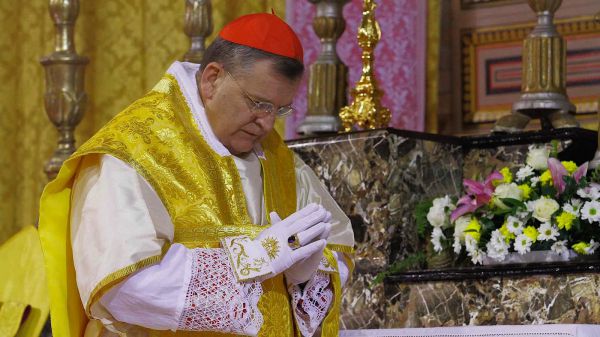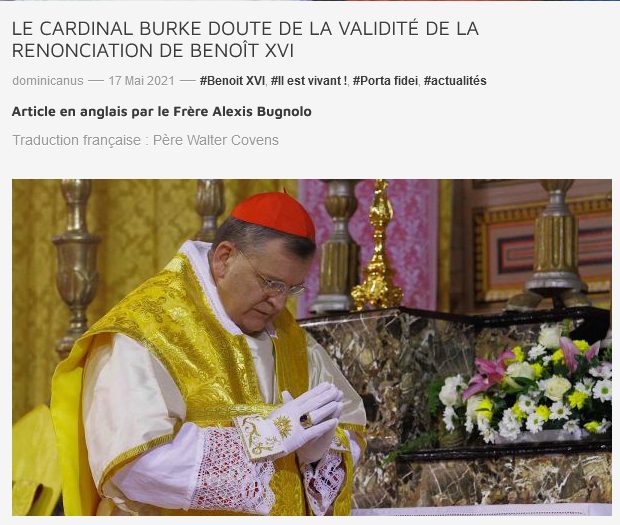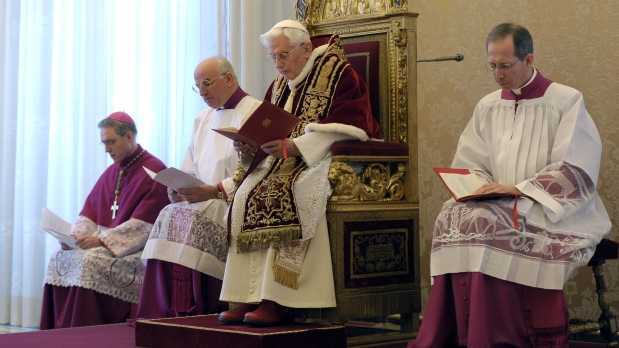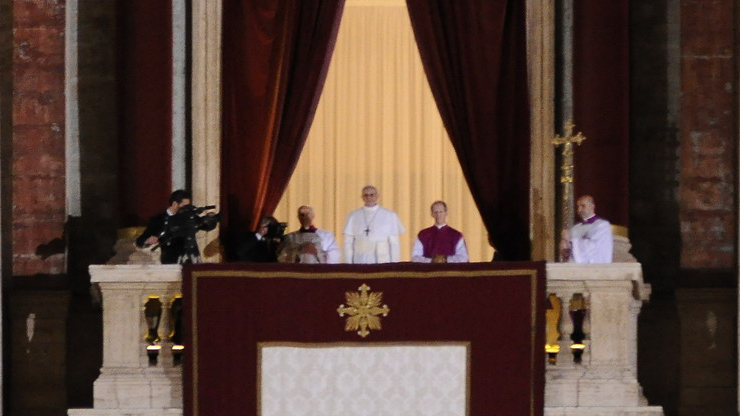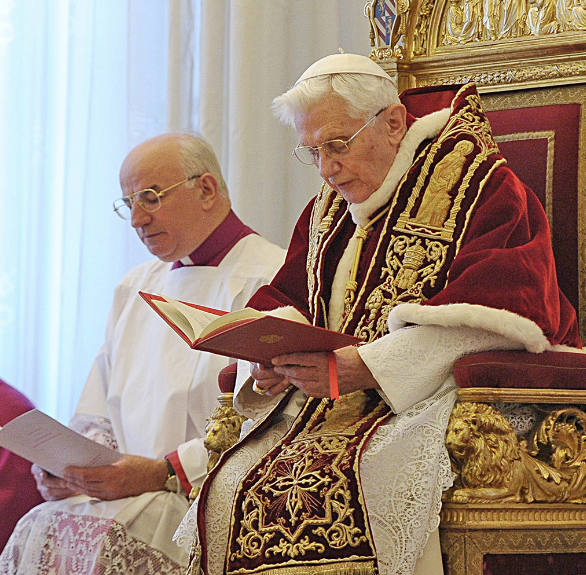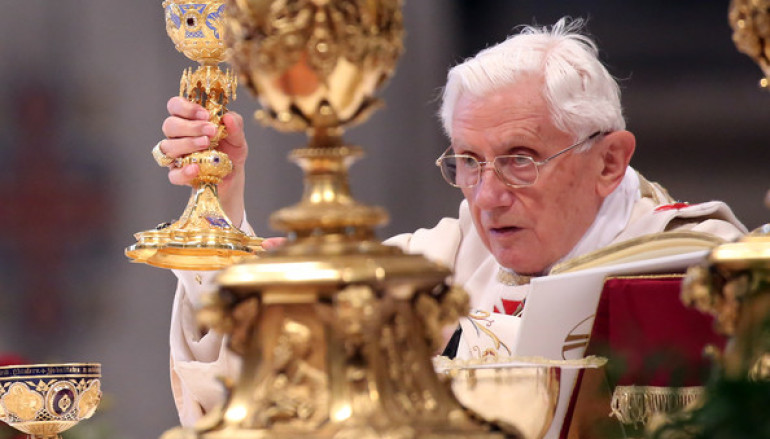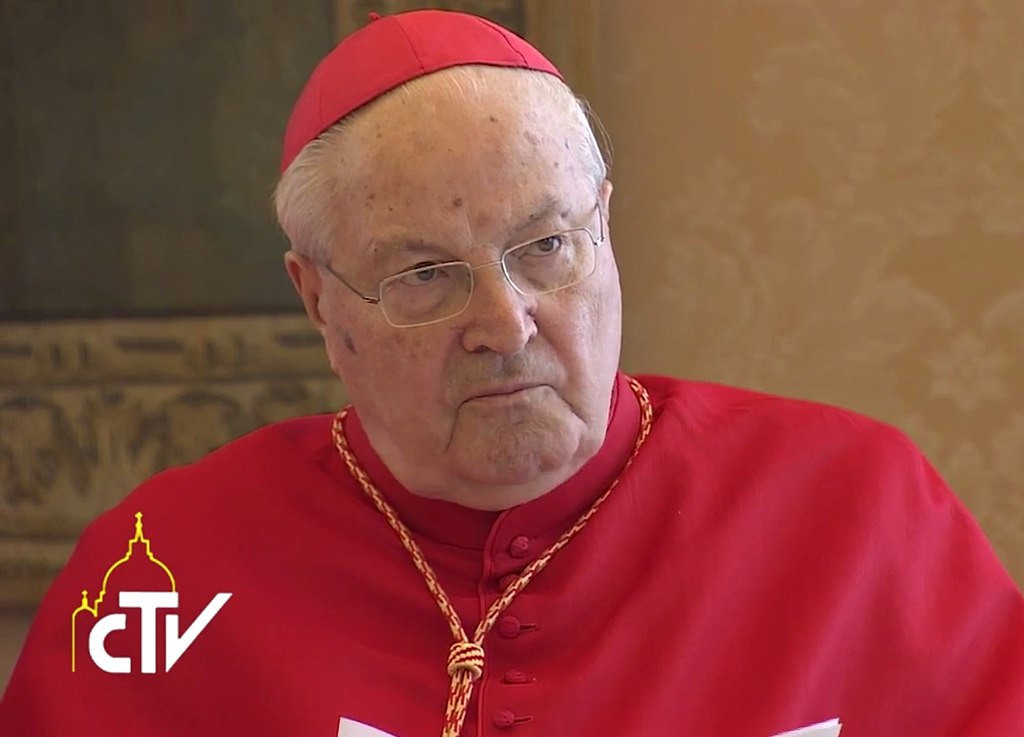March 13, 2020
by Br. Alexis Bugnolo
Today is the seventh anniversary of a day that will live in infamy.
A day of wickedness and flippancy.
A day wherein the Cardinals of the Catholic Church showed their utter contempt for:
- Pope Benedict XVI
- The Catholic Faith in the Papacy
- The Canons of the Catholic Church
- The Papal Law on Conclaves
- Common sense
Let me explain why I say this, point by point, in reverse order.
The Cardinals betrayed common sense 7 years ago today
It is obvious by now, that if anyone on the planet ,who had common sense, sat down and talked to Bergoglio for 15 minutes, he would realize that he is not a fit candidate to be Roman Pontiff.
But the College of Cardinals had been housed together with him for two weeks prior to March 13, 2013.
Therefore, the last 7 years proves that God certainly did not approve of their judgement in selecting such a man. Indeed, it was an epic failure of the College of Cardinals, as I wrote, in 2015.
The Cardinals betrayed John Paul II’s law on Conclaves
The Cardinal Electors violated the papal law on conclaves, in several ways.
First of all, they violated the Law, Universi dominici gregis, as regards the requirement in n. 37, of that law, when they held a Conclave without verifying whether there was a legal sede vacante.
A legal sede vacante means that either the previous pope is dead, and they confirm that with a funeral, or the previous pope resigned according to the norm of Canon 332 §2.
I have it from no less than the Secretary of the Pontifical Council for Legal Texts, Mons. Arrieta, whose commentary on the Code of Canon Law I keep at by desk, that there never was any meeting of canon law experts to verify if the Declaratio of Pope Benedict, of Feb. 11, 2013 — commonly called Pope Benedict’s Renunciation — was in conformity with the norm of canon 332 §2.
Second, the Cardinals violated n. 81, of the same papal law, by entering into agreements and promises to vote for Bergoglio, as Cardinal Daneels of Beglium admitted in his Biography composed of interviews he gave. But the College has never acted on the self admission, which in Canon Law tradition is an indisputable act of self imputation of a canonical crime. I have covered this issue in an extensive Chronology of Events, which still remains the most authoritative collection of facts on the matter, on the net.
Thrid, the Cardinals rushed to elect Bergoglio by violating the same Papal Law on the number of ballots permitted on each day: four, as is specified in n. 63, of the same papal law, regarding limit on the number of ballots to be taken on the 2nd day of balloting and all subsequent days. Because, as has been confirmed by several testimonies in the last 7 years, Bergoglio was elected on the 5th ballot. And this has never been denied.
Fourth, while there has been much controversy over whether the Cardinals could proceed to a fifth ballot in the case of a 4th balloting which contained 1 more vote paper than the number of Electors present, there remains 2 legal questions which have never been addressed about this:
- The Cardinals could not lawfully proceed to a 5th Ballot unless they paused the election and held a discussion on the interpretation of the papal law, using the right conceded to them in that same law, in n. 5, for this purpose. If they proceeded to a 5th ballot without such a discussion and vote, then even if they interpreted it as valid, that omission made their interpretation illicit, and hence the entire election invalid.
- Whether the Auditors of the Papal Conclave, as specified in n. 70 of the same papal law, held any meeting or discussion in accord with the norm, there specified, regarding the auditing of the final vote. Because in the case that there was no meeting in accord with n. 5 of the same papal law, in regard to whether to proceed to a 5th ballot when only 4 ballots were permitted, then likewise if the Auditors did not meet, the election was canonically invalid. And if they did meet, they had to declare in the case of the lack of a vote in accord with n. 5, that the election was invalid.
Since the multiple reports about a 5th balloting are all silent about what should have happened as regards nn. 1 and 2, here above, it can be rightfully doubted the election was valid. Because a doubtful pope is no pope.
The Cardinals Betrayed the Canons of the Catholic Church
Seven years ago today, the Cardinals consummated their betrayal of the Canons of the Catholic Church promulgated by Pope John Paul II, in 1983, in the text known as the Codex iuris canonicis, or the Code of Canon Law.
First, the Cardinals violated canon 40, which required them not to take any decision in regard to Pope Benedict XVI’s Declaratio of Feb. 11, 2013, until they had the Latin text in hand in its final corrected version. Since the Vatican Press office in the days following February 11 published at least 3 versions of the text, there is sound canonical evidence that Cardinal Sodano, through Father Lombardi, violated canon 40 in instructing Giovanna Chirri at 11:58 AM, on that morning, to announce to the world that Pope Benedict has announced his resignation from the Pontificate on Feb. 28. Canon 40 declares invalid any act taken by a subordinate, before he has in hand the integral text of the act of his superior.
Second, the Cardinals violated canon 41, which required them to examine if the legal act contained in the Declaratio was an act specified by the Code of Canon Law and was in all its particulars a command to do something opportune. But since in the entire Code of Canon Law there is no mention of an act of renunciation of ministerium, the act posited by Pope Benedict XVI was clearly an an actus nullus, and thus canon 41 required them not to act upon it. Also since a renunciation of ministerium does not effect the loss of the papal office, the fact that the Declaratio speaks of calling a Conclave is an inopportune detail or provision. Canon 41 requires that those with mere ministry of execution, in such a case, have recourse to the superior to correct these issues. Once again, according to Mons. Arrieta, nothing of the kind happened.
Third, the Cardinals violated canon 38, which required them not to interpret the Declaratio of Pope Benedict as being in conformity to Canon 332 §2, on the grounds that by naming the ministerium instead of the canonically required munus, the act would gravely injure the rights of the Faithful to know if the pope had validly resigned or not, would cause doubt and risk schism in the Church. For in such a case, Pope Benedict XVI would have had to granted a derogation of canon 332 §2 in his Declaratio, in conformity with canon 38, otherwise the act would have been irritus. He did not, so the act was irritus — a technical canonical term which means having not effect in law, void, on account of having not followed due procedure (ritus).
Fourth, the Cardinals violated canon 36 §1, which requires them to interpret strictly any papal act which violates the norm of any canon, let alone Canon 332 §2. To interpret strictly means that they had to read ministerium as exclusive of any signification of munus, and thus hold that the Declaratio was prima facie incapable of causing Pope Benedict to validly resign the papal munus, the papal office and the papal dignity.
Fifth, the Cardinals violated canons 126 and 188, which require that a juridical act of renunciation of office contain the proper or essential act specified in the law. As is clear from the Code of Canon Law, which speaks of the Papal Office in canons 331, 332, 332, and 749, the proper term for the papal office is the petrine munus, not the petrine ministerium. Hence, they were required in accord with canon 188 to judge the renunication irritus on the grounds of substantial error.
Sixth, the Cardinals violated canons 17 and 145 §1, which require respectively that the terms of all canons be understood in their proper sense, that ministerium and munus, when mentioned in any canon be understood thus, and to undertake a study of the entire Code of Canon Law and canonical tradition, in the case of the doubt as to whether ministerium can suppose for munus. They did no such thing in February of 2013, as Mons. Arrieta affirmed to me.
Seventh, the Cardinals violated canon 332 §2, which requires them to recognize a papal renunication only if the Pope renounces his munus, and does so freely and manifests this duly. But since a good number of the Cardinal Electors were present in the Consistory of Feb. 11, 2013, they heard with their own ears that he made errors in Latin and that he said ministerium not munus, in the crucial core section of the Declaratio. They also heard him say munus twice before that. So they had indisputable canonical evidence that the Pope knew what he was doing, knew how to distinguish munus from ministerium, and did NOT intend to renounce his munus.
The Cardinals violated the Catholic Faith in the Papacy
Seven years ago, today, the College of Cardinals violated the Catholic Faith in the papacy. First, in the strict sense of the Faith, namely, that there can only be one pope. Because, it was clear already by March 3, 2013, that Pope Benedict XVI by his own decision was going to retain the papal dignity by using the title “Pope Emeritus”. There was at least one scholarly refutation of the validity of this published on March 3, 2013 by Father Gianfranco Ghirlanda, S. J., former rector of the Pontifical Gregorian University at Rome. So they could not be ignorant of the fact. The same canonical scholar that week affirmed that a heretical pope loses office immediately. So in choosing an obvious heretic as Pope they also violated the Catholic Faith.
The Cardinals showed their utter contempt for Pope Benedict XVI
Seven years ago, today, the Cardinals consummated their utter contempt for Pope Benedict XVI, in that they responded with glee at his renunciation, and not with consternation and respectful attempt to dissuade him from it.
As reported in the press, in February of 2013, only one Cardinal, Cardinal Pell went on record as saying that the resignation should not happen. He said this before Feb. 28, 2013. He was also the first Cardinal the Vatican allowed to be prosecuted after February of 2013. Hmm.
Respect and reverence for the Holy Father, especially when frail and aged, requires first of all that the Cardinals assist him in executing his will, not obstructing it nor allowing it to be executed in an invalid manner.
Yet it also requires, out of gratitude, that they attempt to convince a good man not to resign. If they omit that, they are basically saying he is not a good man or that they despise him.
And they showed their contempt, not only in sentiment, but by positive canonical ommissions, in seemingly in several ways, because in February of 2013 none of them were under a pontifical secret, yet in 7 years they never have confirmed — to my knowledge — in any interview that they did not do the following:
- They did not ask Pope Benedict to explain to them why he made his decision or what it meant, to make sure he was resigning freely.
- They did not ask Pope Benedict to correct the 40 errors in the Latin text which he read, before it was published, so as to prevent the shame of such a thing staining the last act of his papacy and the Apostolic See.
- They did not investigate or question Archbishop Gänswein and those around the pope as to the circumstance of the act to be certain that he was not manipulated or coerced.
- They did not ask one another what they knew about the matter. If so, they would have discovered that Pope Benedict did not seek the counsel of others (according to Archbishop Gänswein) or refused the counsel of his better advisers (according to Archbishop Gänswein and Cardinal Brandmuller). If they had done this, they would have been altered to the necessity to examine the act further.
- The consummated their disrespect through all these things and for not treating the Holy Father with that due respect for an aged man, in which one presumes frailty and therefore double checks everything to make sure it is done rightly.
Conclusion
For all these reasons, I think it can be said, objectively, that today marks the 7th anniversary of a day which will live in infamy in the history of the Church until the end of time and for all eternity. The Cardinals gravely failed in their duty as Cardinals and as Electors and as Bishops and Catholics. They failed also deliberately and by omission. Their failure also was canonically imputable, since the Code of Canon Law holds as presumptive, the responsibility of men with such high office to know the law and follow it.
Hence, it is objectively and canonically certain, that Bergoglio is not the pope. Because a man whose claim to the papacy is vitiated by so many canonical doubts, is not the pope, according to the ancient maxim of St. Robert Bellarmine, S. J.: a doubtful pope is not the pope.
_________
CREDITS: The Featured Image is a detail of the photograph by Tenan, which is used here in accord with the Creative Commons Atribution-Share Alike 3.0 unported license explained here.
+ + +
[simple-payment id=”5295″]

